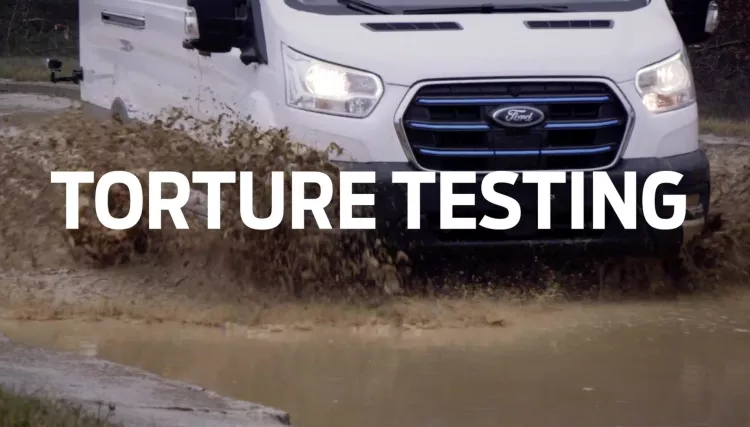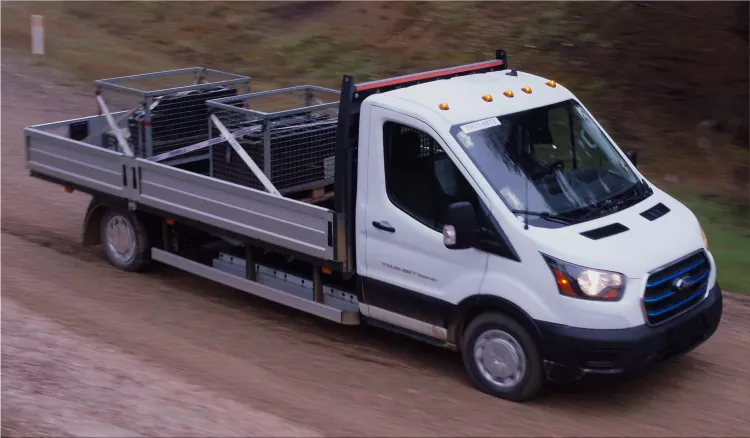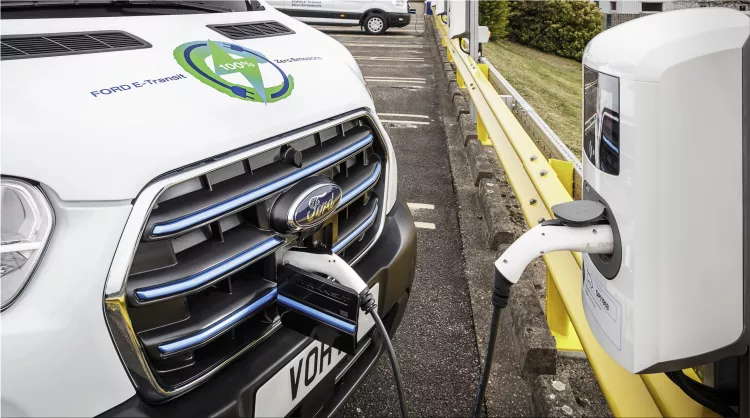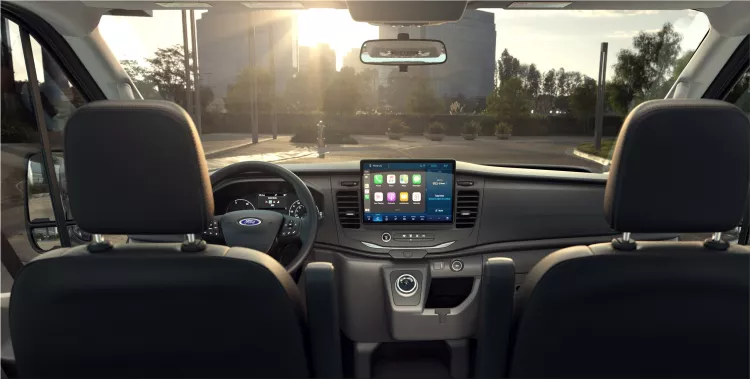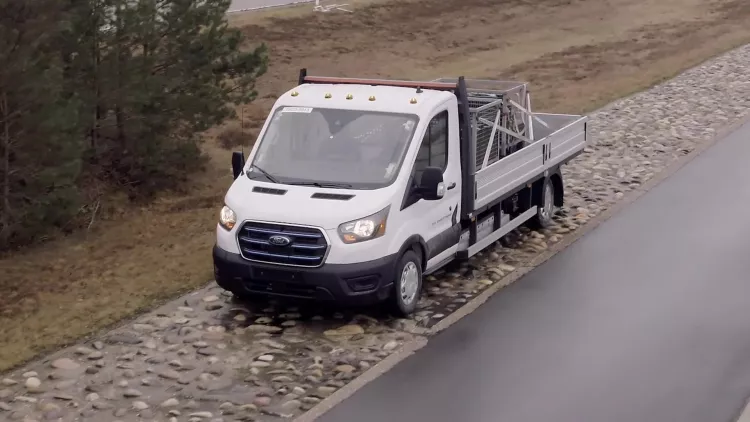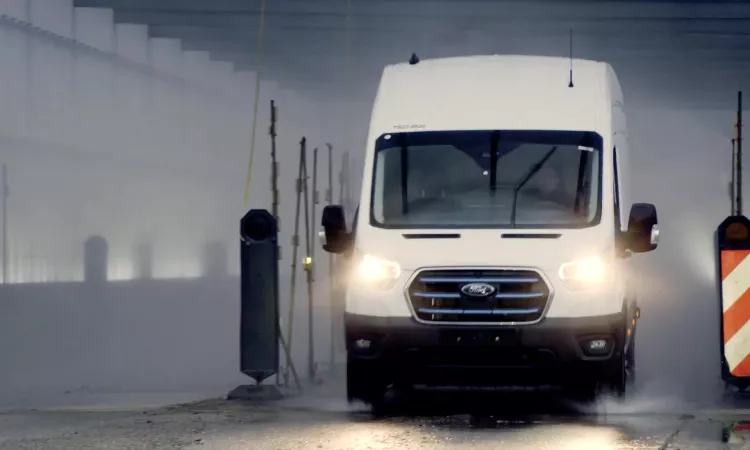Within 12 weeks, the new Ford E-Transit will be subjected to tough tests equivalent to 10 years of use of the new all-electric version of the world's best-selling van.
Ford shows how hard the E-Transit electric van is tested in extreme weather conditions and wear and tear. The stress testing ensures that the electric van can withstand as much as the diesel vans, and corresponds to 240,000 kilometres driven or around 10 years of tough use.
The new all-electric van has been tested during winter conditions in Michigan in the USA. It has been tested in extreme cold and heat in Ford's factory in Cologne (Germany). The electric van has also been put to hard tests with giant road holes and poor surfaces at the company's test facility in Belgium.
At Ford's weather factory, weather conditions in both the Sahara and Siberia are recreated. Temperatures above 40 degrees Celsius are created with the help of 28 spotlights with 4000-watt bulbs, allowing the new E-Transit to stand for more than 14 days. The new all-electric van has a battery pack that uses liquid cooling technology for optimal performance in extreme weather conditions.
The E-Transit, which has an estimated electrical range of up to 350 kilometres according to the WLTP measurement method, is also exposed to temperatures down to -35 degrees Celsius and driven hard with a full load up to a full 2500 meters above sea level. Thousands of passages over potholes, curbs and long distances on very bad roads have also been completed at Ford's test facility in Belgium.
The battery in the new Ford E-Transit is located at the bottom of the vehicle. For the van, this means that the cargo space is up to a full 15.1 cubic meters. It's the same as today's Ford Transit 2T with rear-wheel-drive. The expected load capacity is 1616 kilos for the van and 1967 kilos for the chassis models.
The durability of the battery pack, the electric motor and the unique rear springs were tested by driving the new model many times through mud and salt baths, through salt water spray and on simulated winter roads. In addition, the components have been extensively tested to avoid rust. The reliability of the electric motor was tested by running it continuously for 125 days.
The new E-Transit is part of Ford's $30 billion investment in electrification by 2025. By 2024, all its commercial vehicle models will also be available as all-electric and/or rechargeable hybrids. Ford further expects that as much as 2/3 of their commercial vehicle sales will be either rechargeable hybrids or all-electric cars by 2030.
In Europe, Ford will offer as many as 25 different E-Transit variants (vans, double cabs and chassis with body options). All are available at different lengths, ceiling heights and load capacities.
The van eagerly awaited by European startup companies was unveiled by Ford Pro. The new Ford E-Transit Custom is the all-electric version of Europe's best-selling minivan. It was built from the ground up to give customers in the one-ton… Continue reading
The Ford E-Transit is the electric version of the popular Ford Transit van, which is widely used for commercial purposes such as delivery, cargo, and passenger transport. The E-Transit is… Continue reading
The new Ford E-Transit all-electric van will arrive in the spring of 2022. The 100% electric version of the world's best-selling van has an estimated range of up to 350 km (this is three times the average daily distance travelled by… Continue reading
Ford has unveiled the Ford Pro Electric SuperVan at the Goodwood Speed Festival, marking the first electrified chapter in the company's legendary Supervan series. By maximizing the advantages of electrification and advanced connectivity… Continue reading


